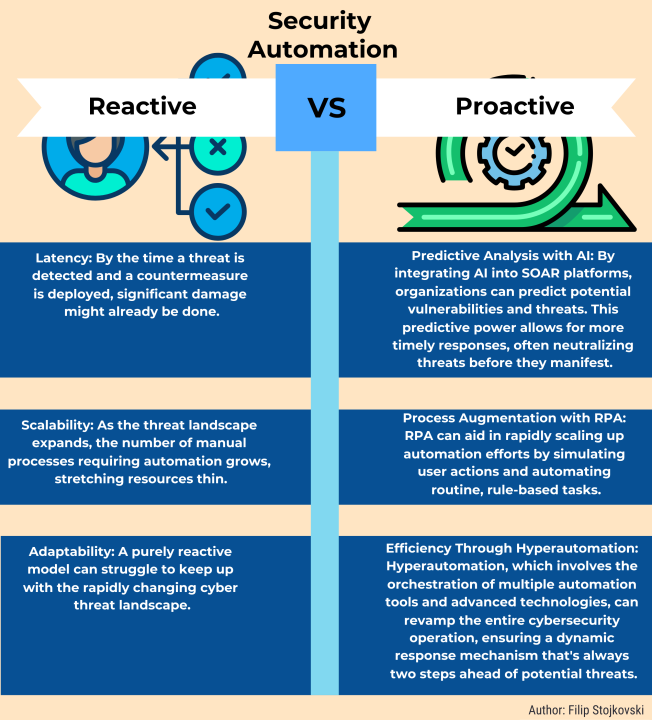Key Takeaways
- Building a strong defense begins with proactive, continuous monitoring and the rapid identification of evolving network threats in real-time.
- Intrusion detection and prevention systems, supported by multi-layered strategies and a culture of security awareness, are essential for minimizing risk and protecting business assets.
- Effective strategies rely on a blend of automation, skilled human analysis, and strong internal policies to combat increasingly sophisticated cyber threats.
- Industry insights and real-world examples underscore the importance of readiness, responsiveness, and continuous improvement in a rapidly evolving threat landscape.
Why Proactive Network Security Matters
Modern organizations face persistent and ever-evolving threats targeting their networks, systems, and sensitive data. A passive or reactive security stance puts businesses at greater risk for financial loss, regulatory penalties, and reputational harm. In this environment, proactive defense—where teams anticipate, detect, and address threats before they cause serious harm—emerges as the logical strategy. Critical to this defense is the practice of Network Security Monitoring & Intrusion Detection/Prevention, a set of technologies and processes designed to continuously monitor network activity, identify anomalies, and stop attacks in their tracks.
Evidence of this need is everywhere. The IBM 2022 Data Breach Report found that breaches now cost organizations an average of $4.35 million—a figure that increases for those with slow detection or inadequate response protocols. But cost isn’t the only concern. Operational downtime, legal consequences, and erosion of trust can significantly set companies back for years. Those investing in proactive safeguards and constant vigilance consistently outperform their reactive peers in recovery, customer retention, and long-term resilience. The lesson is clear: waiting for signs of trouble is no longer a viable option.
Common Network Threats to Watch
The surge in digital connectivity brings with it a broad spectrum of threats, each with its tactics and consequences. Common attack vectors have become increasingly sophisticated over the years, and their methods now combine technical exploits with social engineering and deception. For example, phishing attacks remain incredibly successful by disguising malicious links as legitimate communications, often tricking even the most vigilant professionals into parting with passwords or sensitive information.
Meanwhile, ransomware has become increasingly prevalent, with attackers encrypting corporate data and demanding substantial payments for its return, sometimes targeting backup systems and causing prolonged outages. Advanced Persistent Threats (APTs) involve highly organized actors lurking undetected for months, collecting information or staging future attacks. Additionally, traditional malware continues to evolve, bypassing standard protections and opening footholds for deeper breaches. Extra caution is necessary due to insider risks, as trusted users can inadvertently or intentionally create vulnerabilities. Awareness and adaptability, supported by real-time threat intelligence and layered security, are keys to navigating these multifaceted risks.
Core Components of Effective Monitoring
Modern security is never accomplished with a “set it and forget it” mindset. Robust protection requires ongoing vigilance, rapid response, and adaptability, brought together by several fundamental components. Chief among them are Network Intrusion Detection Systems (NIDS), which inspect network traffic for both known signatures and suspicious anomalies. These systems can catch everything from unauthorized logins to unusual data flows, providing early warnings for emerging threats.
For organizations requiring a more proactive defense, Network Intrusion Prevention Systems (NIPS) take things a step further—automatically blocking or isolating suspicious activity to stop attacks in real-time. This combination of automated systems and 24/7 log analysis empowers security teams to sift through high volumes of data, quickly separating real threats from noise. Underpinning these tools are comprehensive incident response plans, carefully defined protocols that dictate how to act the moment an alert is verified. This readiness streamlines collaboration among IT, legal, and business units, enabling the entire organization to respond with speed, clarity, and purpose.
Strategies for Detection and Prevention
Success in today’s threat landscape requires strategies that extend beyond simply locking down doors or implementing limited-scope firewalls. Proactive organizations combine practical steps and flexible thinking, continuously improving their security posture. Regularly updating and patching systems removes vulnerabilities before they can be exploited. Network segmentation divides the network into zones, making it harder for attackers to move laterally—even if they gain initial access.
Anomaly-based tools are valuable for uncovering “zero-day” exploits, in which attackers use previously unknown vulnerabilities. Regular, secure data backups—physically separated from operational networks—mean that even if ransomware strikes, business continuity can be restored. Actionable alerting, combined with disciplined investigation and threat hunting, ensures that suspicious activity doesn’t fall through the cracks. Collectively, these steps form a “defense-in-depth” strategy, ensuring that if one barrier fails, others are ready to intercept threats before they escalate.
Balancing Automation with Human Insight
Security automation is indispensable for managing the vast volume and rapid pace of data generated by today’s networks. Machine learning algorithms identify subtle patterns, flag outliers, and expedite responses in ways that no human could replicate manually. However, even the most innovative systems can produce “false positives” or miss attacks that blend in with normal behavior. Security automation, therefore, thrives when guided by experienced analysts who can investigate alerts, correlate seemingly isolated incidents, and continually fine-tune detection rules.
As highlighted in recent studies on security automation and oversight, including insights shared by Forbes Technology Council, organizations that combine digital speed with human expertise resolve incidents more quickly and accurately. Human insight adds context that automation often misses, making it an essential partnership for stopping advanced, targeted, or “low and slow” attacks before serious harm is done.
Education and Policy as Security Foundations
Technical defenses are vital, yet human factors often make or break a network’s proper security. Social engineering and phishing are so successful because they prey on lapses in judgment, not just technical misconfigurations. Regular awareness training and simulated phishing drills equip employees with the knowledge they need to question suspicious requests and spot red flags. Policies that clarify acceptable use, access controls, and secure authentication are just as important.
Frequent communication, clear escalation paths, and a leadership-driven “security-first” culture encourage everyone to take personal responsibility for safeguarding sensitive information. When employees, from entry-level to executive, internalize these lessons, the organization builds a resilient culture that quickly adapts to new threats and limits the potential for costly mistakes.
Future Trends in Network Defense
Emerging technologies are reshaping the future of network defense. Artificial intelligence and machine learning are already helping to forecast attacks, prioritize alerts, and automate responses. As regulatory bodies demand stricter data handling and reporting, organizations will need even more agile systems and robust compliance processes to meet these demands. The greater sharing of threat intelligence across industries and with public agencies will soon become the norm, enabling faster and more coordinated defense against widespread threats. Building a resilient posture for the digital age requires staying ahead of both threats and regulations. In security, agility and readiness are the greatest assets an organization can possess.







